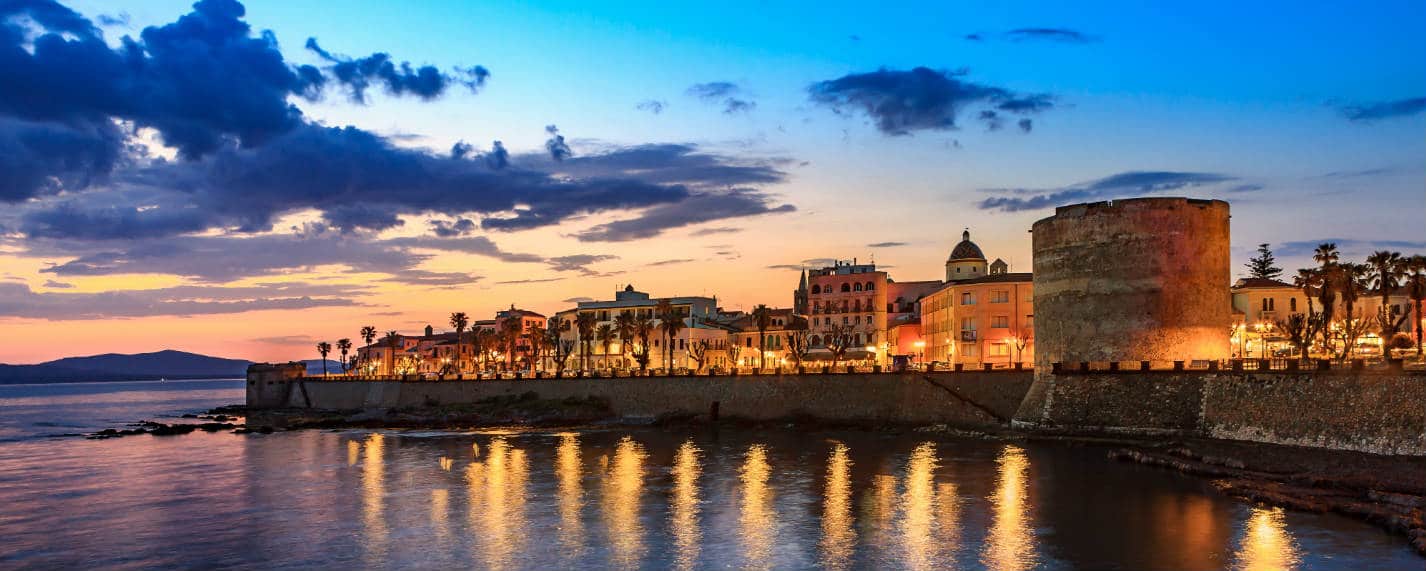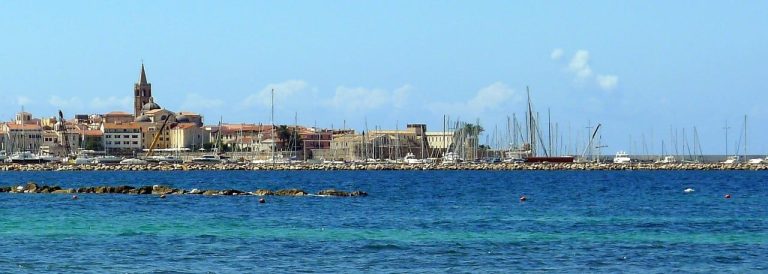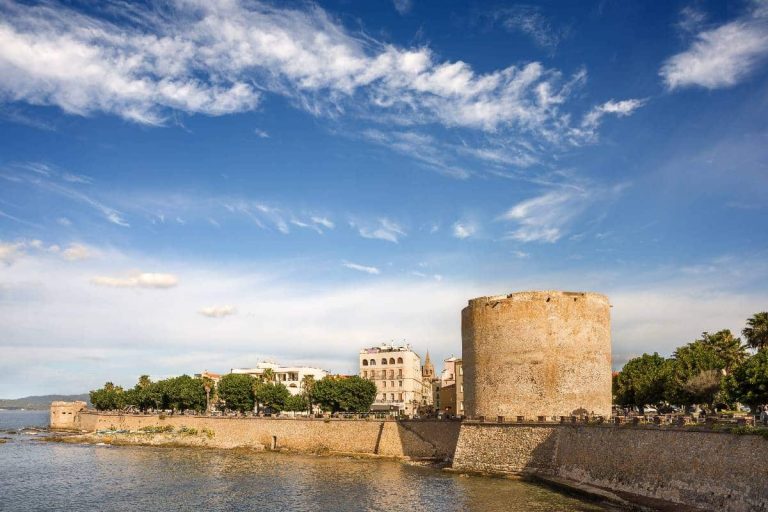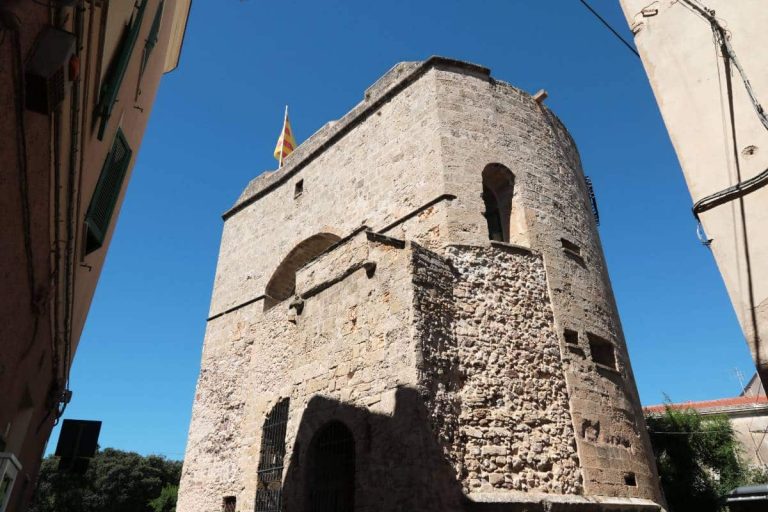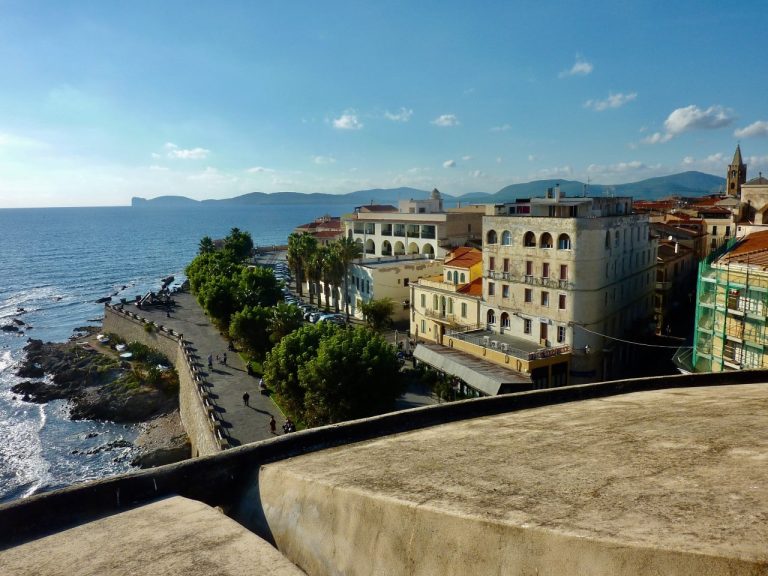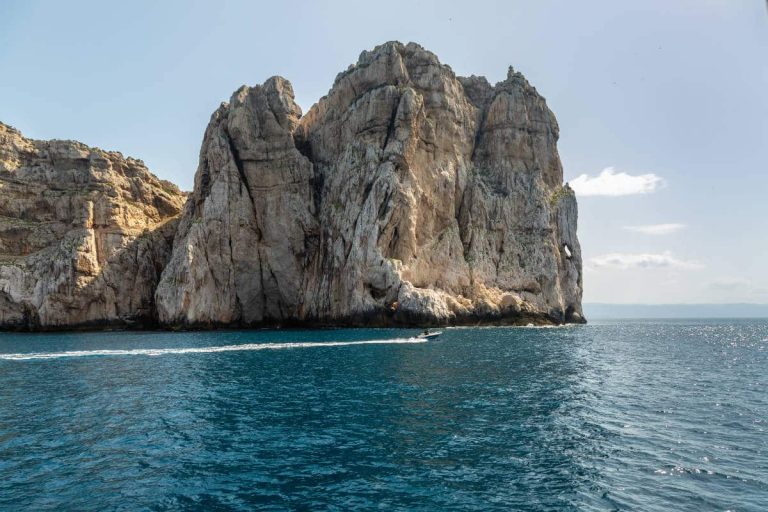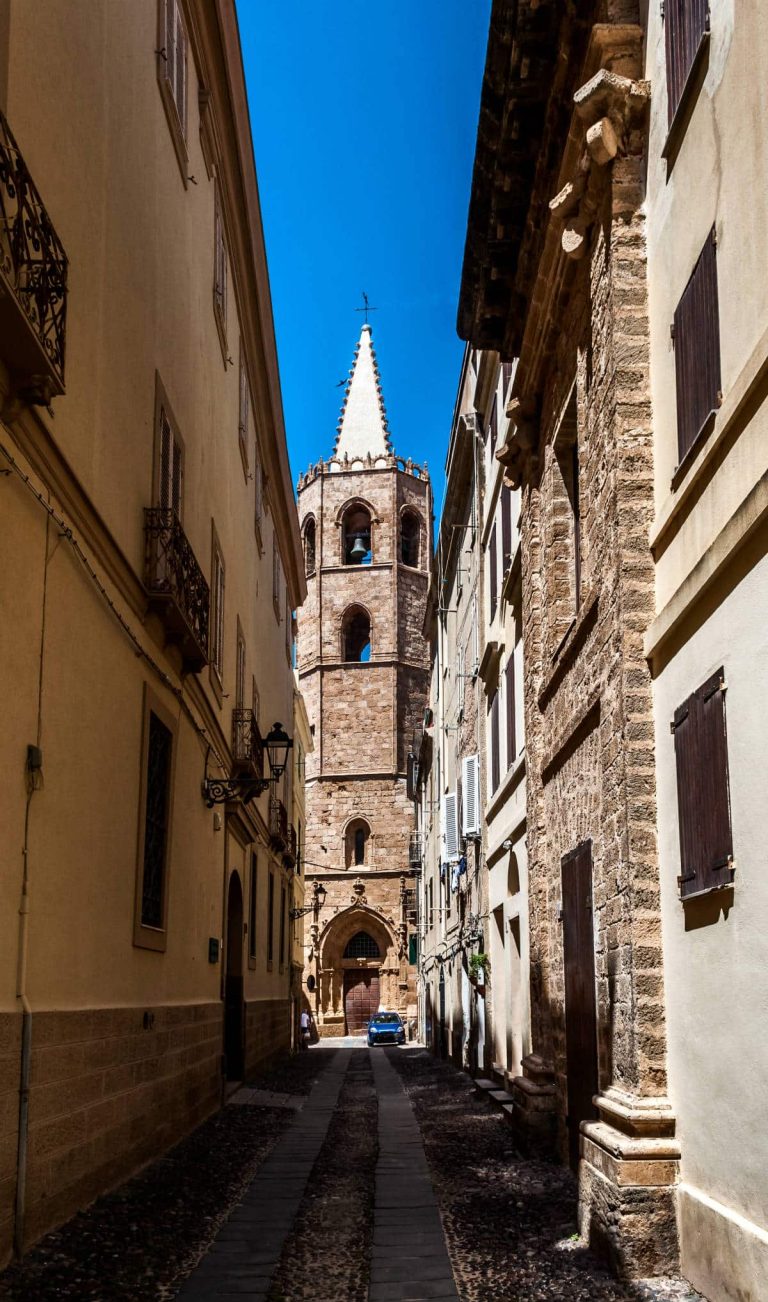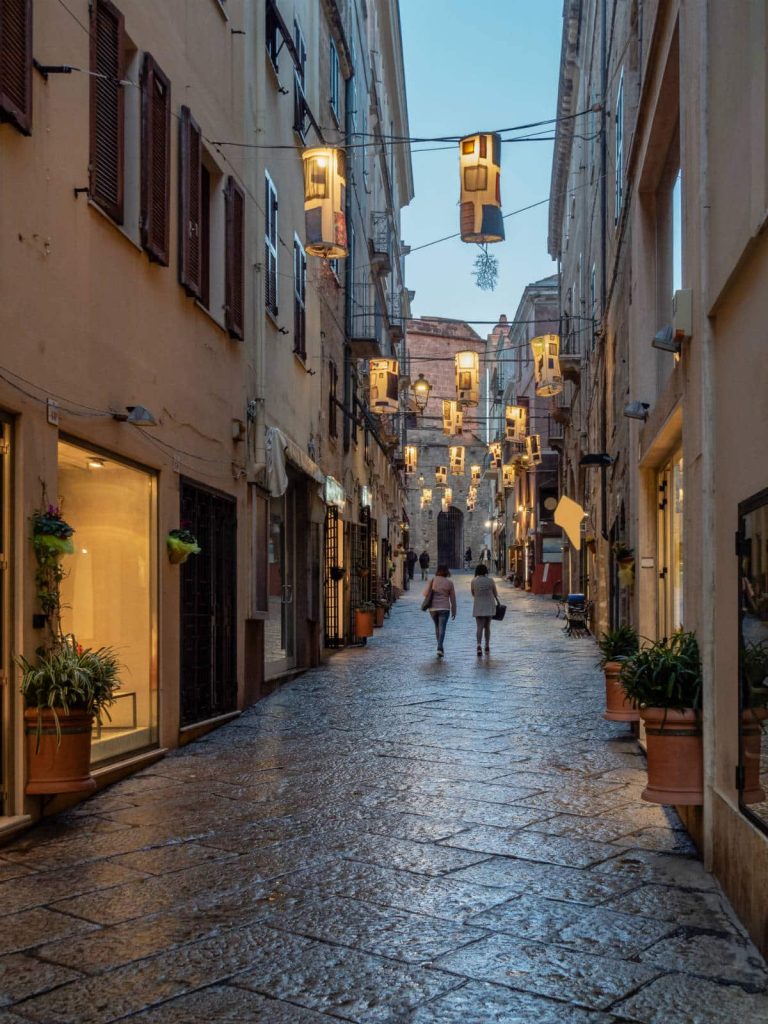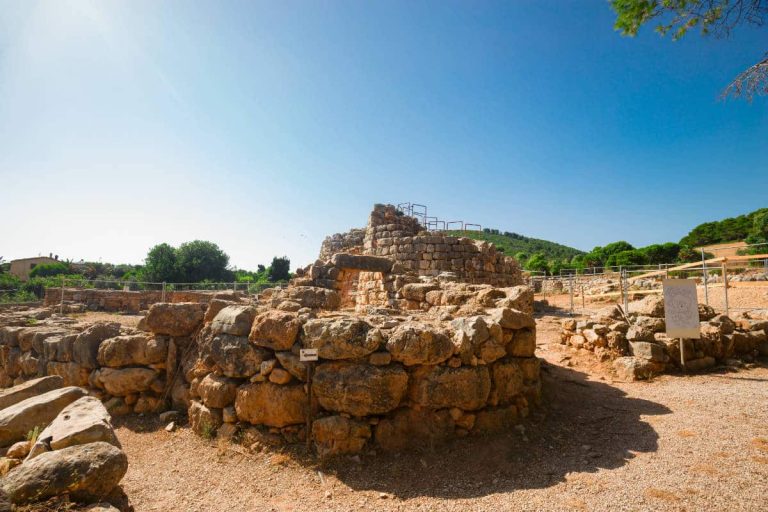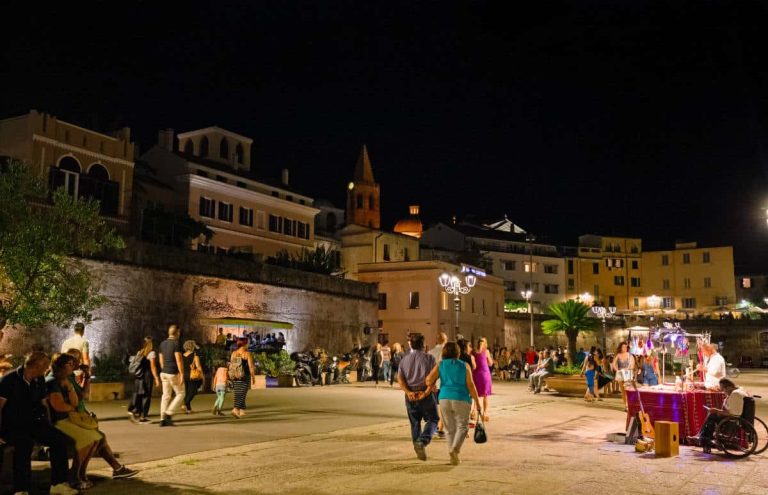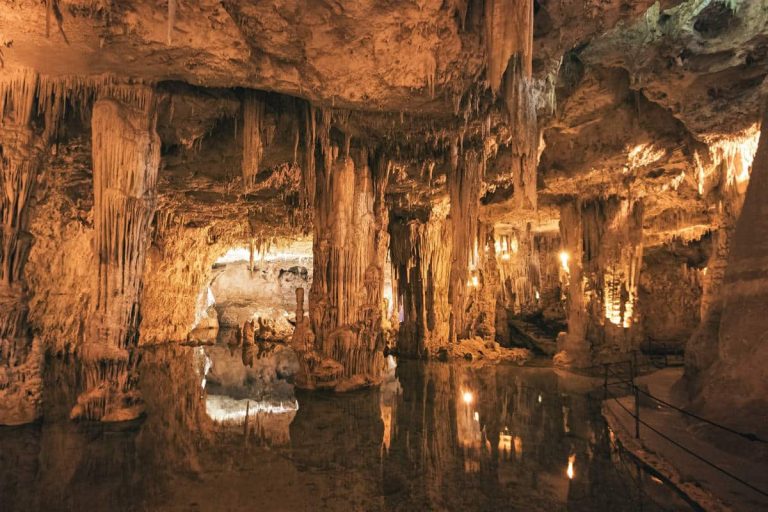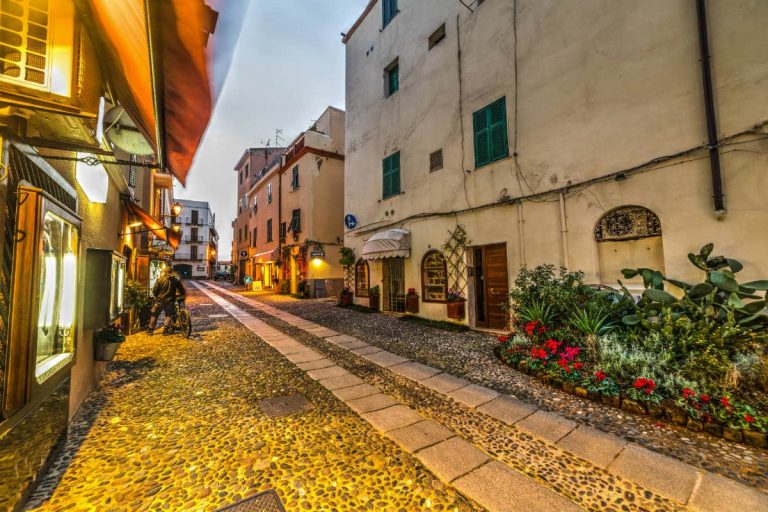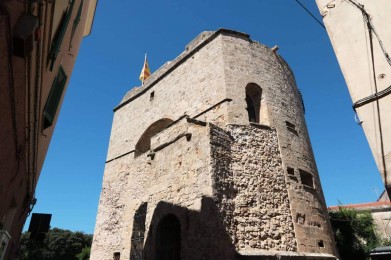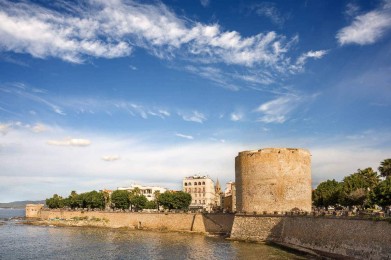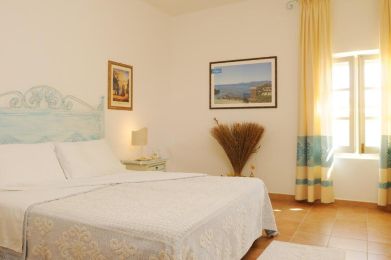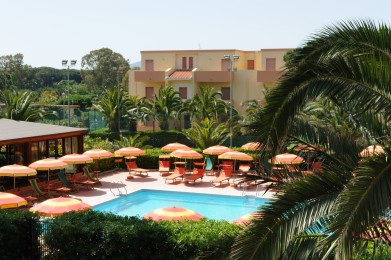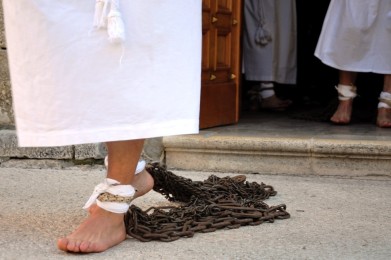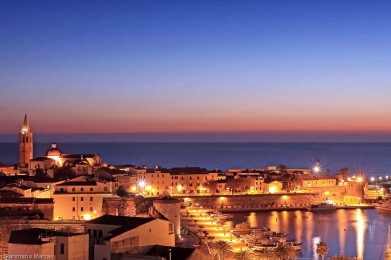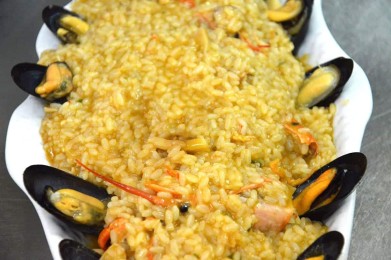A city between land and sea
The gateway to Sardinia thanks to the Fertilia airport, Alghero is famous for its sea-front ramparts, red-roofed houses, golden walls and exciting scenic walks. Its coastline, a full 90 kilometers long and called the Coral Riviera, holds one of the most important colonies of red coral in the Mediterranean, a symbol of the city and the protagonist of a fine craftsmanship tradition, which can also be seen in the Coral Museum.
The most famous beaches are Le Bombarde, beloved by families and surfers, and Lazzaretto, with its ten coves. A little further inland in the bay of Porto Conte is the placid, golden Mugoni beach, while the Lido di San Giovanni offers a comfortable seaside escape in the heart of the town. Finally, the dunes and centuries-old junipers of Maria Pia beach complete the coastal enchantment.
Old town: the Catalan heart of Alghero
The historic center, which arose from the 12th century with the Doria family, is a labyrinth of alleys that open into lively squares. From the ancient Torre di Porta Terra, now a multimedia space, a path winds its way among fortified towers and bastions that tell of the city's Catalan soul: Torre di San Giovanni, Torre dello Sperone (or Torre di Sulis), Bastioni Cristoforo Colombo and Marco Polo, amid seascapes and ancient palaces.
Civic Square, the city's "living room," is home to elegant Catalan-Gothic palaces such as Casa de la Ciutat, Palazzo de Ferrera and the Royal Customs House, as well as the finest boutiques and the historic workshop of fashion designer Antonio Marras.
Between faith and art
Alghero is also a city of fascinating churches: the Cathedral of St. Mary (16th cent.), the Church of Carmel with its precious gilded retable, the Church of St. Michael with its colorful majolica dome, and the late Renaissance Church of St. Anne (1735) are must-see stops for lovers of sacred art.
Capo Caccia: the karst wonder
Just outside the center, the scenic promontory of Capo Caccia - with its "sleeping giant" silhouette - offers one of Sardinia's most spectacular landscapes. Here lies Neptune's Cave, accessible by sea or via the 656 steps of the Escala del Cabirol: an underground universe of stalactites, natural pools and mysterious halls.
The area is part of the Capo Caccia - Isola Piana Marine Protected Area, an oasis of biodiversity, underwater caves such as Grotta Verde, Grotta dei Ricami, and flora and fauna that make the Porto Conte Park a paradise for hikers and nature lovers.
Ancient roots
Alghero's origins date back to the Neolithic period, as evidenced by the Domus de Janas of Santu Perdu and the necropolis of Anghelu Ruju, while the Nuragic age bequeathed more than 90 nuraghi. The remains of the Phoenician and Roman civilizations can be seen in the Palmavera and Sant'Imbenia complexes, and the continuous frequentation of the area is also evidenced by the Protocorinthian and Phoenician ceramics found.
From the Middle Ages onward, Alghero has been a crossroads of peoples and cultures: from the Genoese to the Pisans, from the Aragonese to the Catalans, who have shaped it in urban planning, language (even today Alghero's Catalan is officially recognized) and spirit. The appellation "Royal City" came in 1501, and Emperor Charles V personally praised it in 1541.
Traditions and events
Proud of its identity, Alghero celebrates Holy Week each year, with solemn rites following Spanish traditions, and Cap d'Any de l'Alguer, a vibrant New Year's Eve with shows and events throughout the city. Between alleys, markets and ramparts animated by street performers, each season has its own charm.
Alghero is a place where the Mediterranean becomes a tale, amid waves lapping ancient walls, caves sculpted by nature, and a living culture handed down in gestures, language, and coral. A village to be experienced with all the senses.

